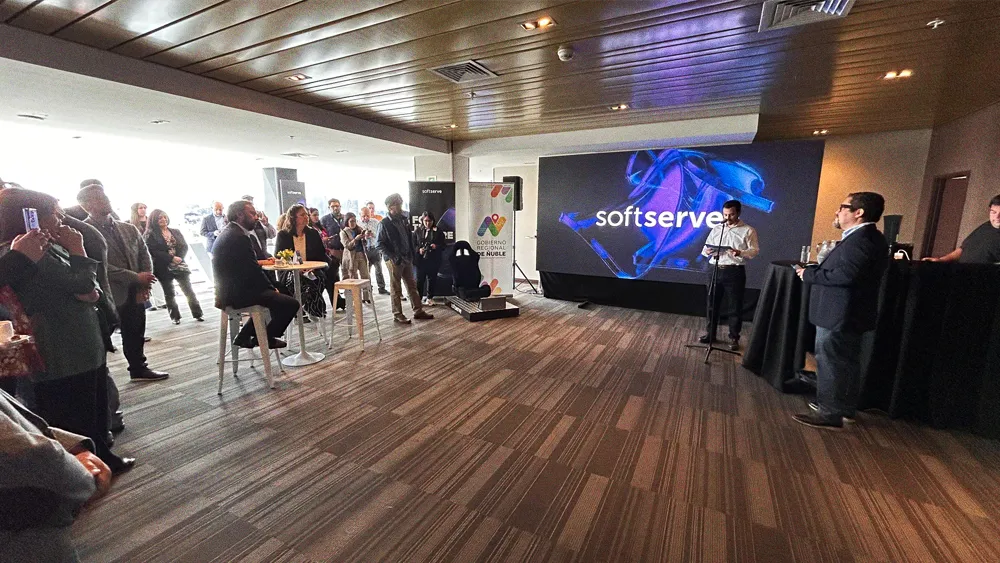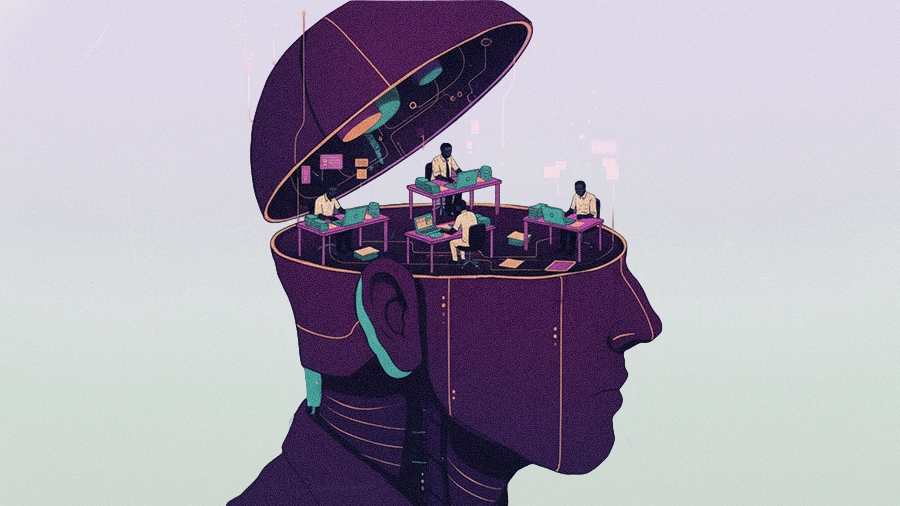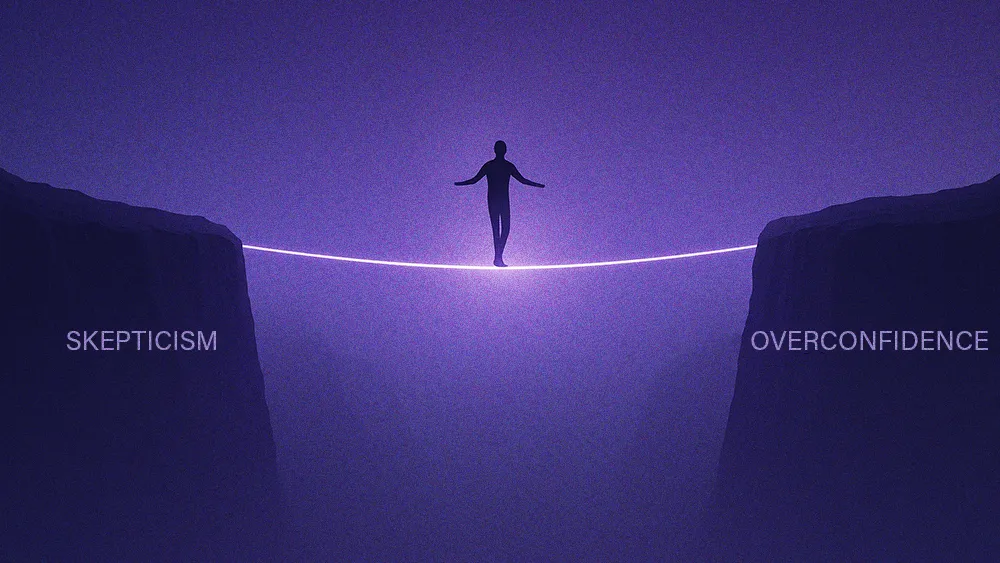Recruiting practices built for static roles break as AI redefines the scope of work

Key Points
Artificial intelligence is quickly making traditional talent management tools like the job description obsolete, creating a mismatch with the dynamic nature of modern work.
Adam G. Hopewell, former Global Head of HR & Talent at Behavox, diagnoses modern talent acquisition as a “broken, industrial-age process” that ignores decades of hiring science.
He proposes a new model of “organizational capability orchestration,” which deconstructs workflows to fluidly blend human and AI capabilities to meet business outcomes.
This shift would elevate the human role, freeing HR professionals from administrative tasks to focus on coaching, culture, and “spreading humanity.”
Job definitions are becoming a lot more blurred at the edges. I hate job descriptions because they limit people's thinking as to what their job entails. The tasks required to produce those outcomes will change over time, especially as AI's capabilities continue to grow. Employees need to be able to stay adaptable.

Adam G. Hopewell
Global Head of HR & Talent
Behavox
The classic job description is a relic of days long gone, yet it still dictates how companies define roles, write postings, and measure success. That might have worked when work itself was steady, but AI keeps proving that the ground is anything but stable. What organizations need now is not static boxes to slot people into, but a way to orchestrate human and machine strengths that can flex as business needs shift.
We spoke with Adam G. Hopewell, formerly the Global Head of HR & Talent at AI-driven communication surveillance platform Behavox. In a recent series, he outlined how enterprise systems must be rebuilt for a world where humans and machines work side by side. He argued that in talent acquisition, adapting to this shift means wiping the slate clean.
Evidence ignored: “The hiring system as we have it today—the whole interview rigmarole, unstructured interviews, hiring managers making decisions based on their unconscious biases—is that really the best way we can do it?” For all the rhetoric about data-driven decisions, hiring remains one of the least evidence-based functions in business, Hopewell noted, despite decades of research on what truly predicts performance.
He criticized standard job descriptions as “laundry lists of tasks,” pointing to AI’s increasing disruption in the workplace.
What’s in a job?: “Job definitions are becoming a lot more blurred at the edges. I hate job descriptions because they limit people’s thinking as to what their job entails,” he said, clarifying that the job should be centered around providing certain outcomes for the business. “The tasks required to produce those outcomes will change over time, especially as AI’s capabilities continue to grow. Employees need to be able to stay adaptable.”
Shifting sands: The challenge, he argued, is balancing foresight with flexibility. “The underlying fundamentals of the technology’s capabilities are moving so fast that if you plan for today, by the time you’ve gotten something done, it’s already outdated,” said Hopewell. “If we start with breaking down the workflows and identifying what capabilities are most needed, we can then cluster AI-favored tasks and human-favored tasks, and map those to the workflows.”
His solution is to apply “clean sheet thinking,” scrapping the old model in favor of one built on outcomes and capabilities. The process begins with mapping the actual work to be done, then determining the best mix of human and AI strengths to deliver it.
Organizational capability orchestration: “Look at the work to be done, break it down into its constitutional stages or phases, and then really understand what AI can do to assist—to either amplify or augment human intelligence in each of those stages,” advised Hopewell. From there, the blueprint is to identify the human skills that matter most. “Prioritize a short list of technical competencies,” he said. That short list becomes a skills inventory leaders can use to orchestrate work between humans and AI in real time—a model he calls “organizational capability orchestration.”
The stakes for getting it right are immense, a point Hopewell made by reframing the business impact of recruiting. “If a recruiter has six roles to fill at a $200k salary each, with an expected average tenure of 2.5 years, they’ve got an investment portfolio of $3 million,” he said. “It’s a significant investment for most organizations.” Failing to adapt, he warned, turns that investment into baggage.
“It’s like a boat going through water, gaining barnacles,” he said. “If you’re not consciously scraping the barnacles off the hull, then your boat’s not half as responsive and not half as fast through the water as it should be.” For Hopewell, revamping hiring means exactly that—scraping away the buildup of outdated practices so talent, work, and technology can move forward at full speed.
Look at the work to be done, break it down into its constitutional stages or phases, and then really understand what AI can do to assist—to either amplify or augment human intelligence in each of those stages. Prioritize a short list of technical competencies.

Adam G. Hopewell
Global Head of HR & Talent
Behavox
Look at the work to be done, break it down into its constitutional stages or phases, and then really understand what AI can do to assist—to either amplify or augment human intelligence in each of those stages. Prioritize a short list of technical competencies.

Adam G. Hopewell
Global Head of HR & Talent
Behavox
Related articles
TL;DR
Artificial intelligence is quickly making traditional talent management tools like the job description obsolete, creating a mismatch with the dynamic nature of modern work.
Adam G. Hopewell, former Global Head of HR & Talent at Behavox, diagnoses modern talent acquisition as a “broken, industrial-age process” that ignores decades of hiring science.
He proposes a new model of “organizational capability orchestration,” which deconstructs workflows to fluidly blend human and AI capabilities to meet business outcomes.
This shift would elevate the human role, freeing HR professionals from administrative tasks to focus on coaching, culture, and “spreading humanity.”

Adam G. Hopewell
Behavox
Global Head of HR & Talent

Global Head of HR & Talent
The classic job description is a relic of days long gone, yet it still dictates how companies define roles, write postings, and measure success. That might have worked when work itself was steady, but AI keeps proving that the ground is anything but stable. What organizations need now is not static boxes to slot people into, but a way to orchestrate human and machine strengths that can flex as business needs shift.
We spoke with Adam G. Hopewell, formerly the Global Head of HR & Talent at AI-driven communication surveillance platform Behavox. In a recent series, he outlined how enterprise systems must be rebuilt for a world where humans and machines work side by side. He argued that in talent acquisition, adapting to this shift means wiping the slate clean.
Evidence ignored: “The hiring system as we have it today—the whole interview rigmarole, unstructured interviews, hiring managers making decisions based on their unconscious biases—is that really the best way we can do it?” For all the rhetoric about data-driven decisions, hiring remains one of the least evidence-based functions in business, Hopewell noted, despite decades of research on what truly predicts performance.
He criticized standard job descriptions as “laundry lists of tasks,” pointing to AI’s increasing disruption in the workplace.
What’s in a job?: “Job definitions are becoming a lot more blurred at the edges. I hate job descriptions because they limit people’s thinking as to what their job entails,” he said, clarifying that the job should be centered around providing certain outcomes for the business. “The tasks required to produce those outcomes will change over time, especially as AI’s capabilities continue to grow. Employees need to be able to stay adaptable.”
Shifting sands: The challenge, he argued, is balancing foresight with flexibility. “The underlying fundamentals of the technology’s capabilities are moving so fast that if you plan for today, by the time you’ve gotten something done, it’s already outdated,” said Hopewell. “If we start with breaking down the workflows and identifying what capabilities are most needed, we can then cluster AI-favored tasks and human-favored tasks, and map those to the workflows.”

Adam G. Hopewell
Behavox
Global Head of HR & Talent

Global Head of HR & Talent
His solution is to apply “clean sheet thinking,” scrapping the old model in favor of one built on outcomes and capabilities. The process begins with mapping the actual work to be done, then determining the best mix of human and AI strengths to deliver it.
Organizational capability orchestration: “Look at the work to be done, break it down into its constitutional stages or phases, and then really understand what AI can do to assist—to either amplify or augment human intelligence in each of those stages,” advised Hopewell. From there, the blueprint is to identify the human skills that matter most. “Prioritize a short list of technical competencies,” he said. That short list becomes a skills inventory leaders can use to orchestrate work between humans and AI in real time—a model he calls “organizational capability orchestration.”
The stakes for getting it right are immense, a point Hopewell made by reframing the business impact of recruiting. “If a recruiter has six roles to fill at a $200k salary each, with an expected average tenure of 2.5 years, they’ve got an investment portfolio of $3 million,” he said. “It’s a significant investment for most organizations.” Failing to adapt, he warned, turns that investment into baggage.
“It’s like a boat going through water, gaining barnacles,” he said. “If you’re not consciously scraping the barnacles off the hull, then your boat’s not half as responsive and not half as fast through the water as it should be.” For Hopewell, revamping hiring means exactly that—scraping away the buildup of outdated practices so talent, work, and technology can move forward at full speed.




